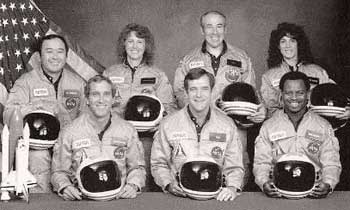The Story of the Challenger Space Shuttle
On January 28, 1986, the seven crewmembers of the Space Shuttle Challenger “Teacher in Space” mission, scheduled to be the 25th space shuttle mission in American history, set out to broaden educational horizons and advance scientific knowledge. Their mission exemplified man’s noblest and most wondrous qualities — to explore, discover, and teach with the aim of inspiring future generations to push the boundaries of contemporary knowledge.
Francis R. Scobee – Mission Commander
Michael J. Smith – Pilot
Gregory B. Jarvis – Payload Specialist 1
Christa McAuliffe – Payload Specialist 2
Judith A. Resnik – Mission Specialist 1
Ellison S. Onizuka – Mission Specialist 2
Ronald E. McNair – Mission Specialist 3
Each member of the Challenger crew contributed unique attributes and displayed remarkable levels of enthusiasm, integrity, and dedication. The Challenger mission was highly publicized due to the addition of crewmember Christa McAuliffe, a high school teacher who was chosen from more than 11,000 applicants to be the first civilian in space. Hawai‘i-born astronaut Ellison Onizuka also garnered special recognition for his distinction as the first Asian astronaut in space. Read more about The Crew.
Tragedy Strikes the Challenger
The Challenger Space Shuttle launched from Pad 39B at Florida’s Kennedy Space Center at 11:38 am EST. To the nation’s shock and sorrow, the Challenger Space Shuttle exploded just 73 seconds after liftoff.
According to NASA’s Report of the Presidential Commission on the Space Shuttle Challenger Accident, the accident “was caused by a failure in the joint between the two lower segments of the right Solid Rocket Motor.” More specifically, investigators discovered that the seals intended to prevent hot gases from leaking during the propellant burn of the rocket motor had degraded and become unsafe.
Leaving a Legacy
In the wake of this tragic event, Challenger surviving families together created a fitting memorial that would serve to perpetuate the astronauts’ mission to seek and discover the hidden knowledge of space. In April of 1986, the Challenger Center for Space Science Education was founded in honor of the fallen Challenger crew. In August of 1988, the first Challenger Learning Center opened its doors in Houston, Texas, providing a progressive learning environment where young space lovers could explore their curiosities.
The creation of a network of Challenger Learning Centers was more than just an educational experiment; it was an investment in the development of the character and competence of our nation’s youth.
Source: Challenger Learning Center



